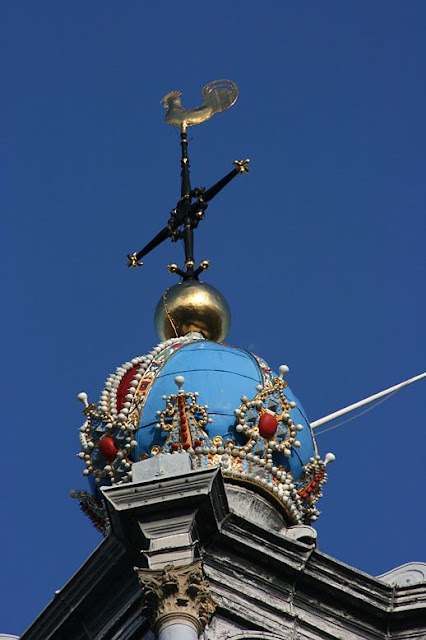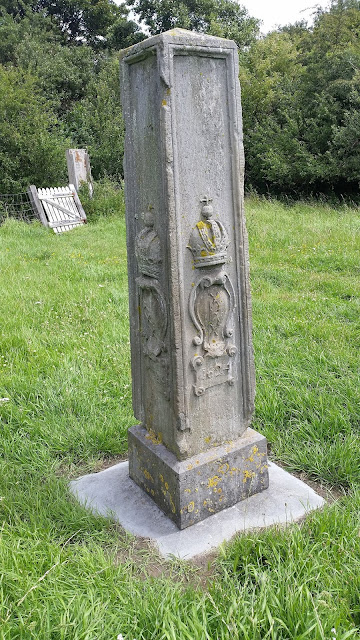Lewis and I remain friends with a former coworker whose wife recently visited the Netherlands. While in its capital, she noticed that the city has a magnificent logo. Since we visited it in 2019, she asked what we knew about it. I'll tell you...
Amsterdam's stadswapen (coat of arms) gets its crown—not from the Dutch monarch—but from Amsterdam’s loans to Maximilian, the Holy Roman Emperor, in 1489. He granted the city the right to include his personal imperial crown in its logo, and that crown evolved into the Hapsburg Imperial Crown of Austria. It looked like this...
You might recognize that crown because the Hapsburgs spread its usage around Europe: Croatian abbeys, Slovak churches, Hungarian palaces, Czech municipal buildings, Bohemian breweries, Venetian documents, German estates, Polish legislators, and towers in Burgundy. In 1762, it inspired the Russian Imperial Crown, first worn by Catherine the Great. (During her rich reign, one Russian ruble was equivalent to $15 U.S. dollars).
The Congress of Poland used a similar crown...
...as do the passports from Montenegro.
The flag of the Greek Orthodox Church looks similar.
In 1630, it appeared in the proposed coat of arms for New Amsterdam (which was renamed New York by the British).
In Amsterdam, the crown sits atop thousands of (refurbished) antique lampposts in the historic City Center, as well as above Blaubrug, and atop the carillon tower at Westerkerk.
It "pops up" in other places, too.
Sometimes, the escutcheon is held by a pair of lions. They were included in the 1500s.
After World War Two, in 1947, Queen Wilhelmina conferred a motto on Amsterdam. In recognition of its resistance against its overlord Nazi Occupiers, the city got three words to add to its coat of arms: Valiant, Steadfast, Compassionate.
The coat of arms is emblazoned in many areas. From overhead doorways to inside corridors, they add punctuation marks of color. It's fun to spot and identify them. If you were in Amsterdam, do you remember seeing any of these?
During the COVID pandemic, the city rewarded helpful citizens with heart-shaped Hero Pins to wear, presented by the mayor.
The centerpiece is a special heraldic emblem: XXX. No, they do not symbolize windmills.
Despite outsider assumptions about the city's "culture of acceptance", they do not connote alcohol...
Those triple X’s are St. Andrew’s Crosses... the same cross used in the flag of Scotland. Born in 5 BC, Andrew was one of Jesus’ dearest Apostles. He resurrected two men, expelled a demon, reassembled a dismembered child, summoned lightening to coerce city-dwellers to build a church, and was crucified on an X-shaped saltire.
Amsterdam's flag is unfurled and draped in every corner of the city. (In contrast, New York City's flag was only used at governmental offices). Living in a much nicer metropolis, Amsterdammers are joyful to wave their flag!
Expressing civic pride, Amsterdam's logo is used practically everywhere. It instills a sense of community: "we're all in this together because this is our home".
While examining the Rijksmuseum's enlarged/detailed online viewing of Rembrandt's The Night Watch, we discovered another! Its hidden in the fabric!

Civic pride abounds!
To see our trip to that kingdom, please use this link:














































































































































No comments:
Post a Comment
Don't be shy: leave your comments :)